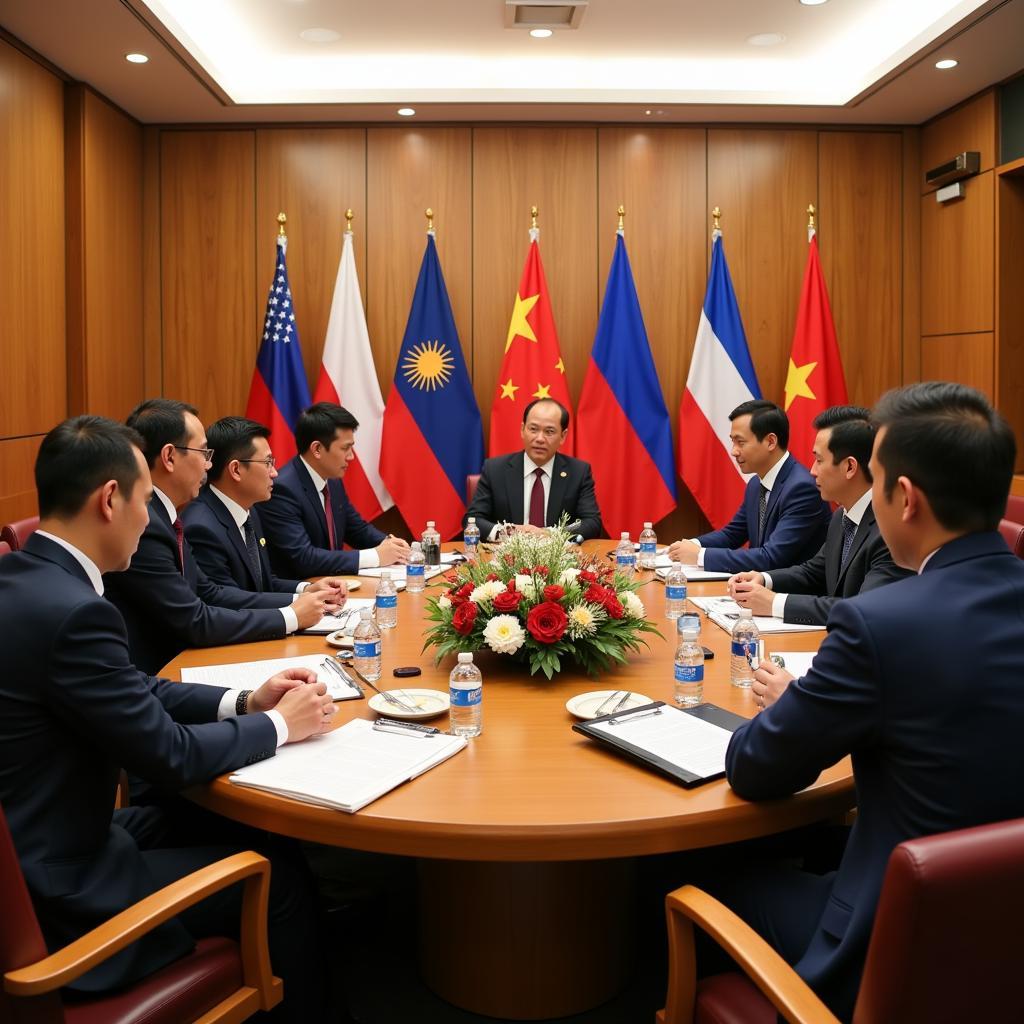ASEAN and the Indo-Pacific are intrinsically linked, with the region playing a pivotal role in shaping the geopolitical and economic dynamics of the broader Indo-Pacific. This interconnectedness presents both opportunities and challenges for ASEAN member states as they navigate the complexities of this evolving landscape.
The Strategic Importance of ASEAN in the Indo-Pacific
ASEAN’s centrality in the Indo-Pacific is not merely geographical; it’s a reflection of the bloc’s growing economic influence and its strategic importance in maintaining regional stability. As a platform for dialogue and cooperation, ASEAN provides a crucial forum for managing competing interests and promoting peaceful resolutions to disputes. This role has become increasingly critical given the rising tensions and power dynamics within the Indo-Pacific. The region’s economic dynamism, coupled with its diverse cultural heritage, makes it a key player in global affairs.
ASEAN’s commitment to multilateralism and its established mechanisms for regional cooperation, such as the ASEAN Regional Forum (ARF), contribute significantly to the management of regional security challenges. These platforms allow for open communication and confidence-building measures between ASEAN member states and other key players in the Indo-Pacific, including the United States, China, Japan, and Australia.
 ASEAN and Indo-Pacific Cooperation
ASEAN and Indo-Pacific Cooperation
Economic Integration and Connectivity in the Indo-Pacific
The Indo-Pacific is a major engine of global economic growth, and ASEAN is at the heart of this dynamism. The region’s burgeoning middle class, combined with its strategic location along vital sea lanes, makes it an attractive destination for foreign investment and trade. ASEAN’s efforts to promote regional economic integration, such as the ASEAN Economic Community (AEC), further enhance this appeal. Initiatives aimed at improving connectivity, both physical and digital, are crucial for unlocking the full economic potential of the Indo-Pacific. These efforts not only facilitate trade and investment but also promote people-to-people exchanges and cultural understanding. You can find more information about ASEAN and Australia’s relationship at asean and australia.
The rise of digital technologies presents both opportunities and challenges for ASEAN in the Indo-Pacific. While these technologies can drive economic growth and improve access to information, they also raise concerns about cybersecurity and data privacy. ASEAN is actively working to address these challenges through the development of regional frameworks and guidelines.
Managing Challenges and Promoting Cooperation
The Indo-Pacific is a region of diverse interests and perspectives, and this diversity can sometimes lead to friction and competition. ASEAN’s role in managing these complexities is essential. The bloc’s emphasis on consensus-building and its commitment to peaceful dispute resolution provide a framework for navigating these challenges.
ASEAN’s role in navigating the complex relationships between various powers, like those between ASEAN and Taiwan, is crucial. For further reading on this, visit asean and taiwan. Maintaining a balance between cooperation and competition is critical for ensuring the long-term stability and prosperity of the Indo-Pacific. ASEAN’s inclusive approach, which emphasizes dialogue and engagement with all stakeholders, is key to achieving this balance.
What is ASEAN’s role in the Indo-Pacific?
ASEAN promotes regional stability and cooperation through dialogue and established mechanisms.
How does ASEAN contribute to economic growth in the Indo-Pacific?
ASEAN fosters economic integration and connectivity through initiatives like the AEC.
What are the key challenges facing ASEAN in the Indo-Pacific?
Managing competing interests, promoting peace, and addressing security concerns are key challenges.
Dr. Anya Sharma, a Southeast Asian political analyst, states, “ASEAN’s convening power and its commitment to dialogue are indispensable for managing the complexities of the Indo-Pacific.” This sentiment is echoed by many experts who recognize the importance of ASEAN’s role in fostering regional stability.
Another key aspect to consider is the evolving relationship between ASEAN and India. This dynamic adds another layer of complexity to the regional landscape. You can explore this further in our article on asean and india relations. The ASEAN Trajectory (ase traj) also plays a significant role in this evolving dynamic. Furthermore, understanding the historical context, such as the discussions at the 25th asean regional forum, provides valuable insight into the current state of affairs.
Conclusion
ASEAN and the Indo-Pacific are intertwined, with the region’s future heavily reliant on ASEAN’s continued leadership in promoting cooperation and managing challenges. By strengthening regional institutions, fostering economic integration, and embracing a spirit of inclusivity, ASEAN can play a vital role in shaping a peaceful and prosperous future for the Indo-Pacific. ASEAN’s commitment to multilateralism and its focus on dialogue remain critical for navigating the complex landscape of the Indo-Pacific.
FAQ
- What is the ASEAN Outlook on the Indo-Pacific?
- How does ASEAN handle maritime disputes in the Indo-Pacific?
- What is the role of ASEAN in promoting sustainable development in the Indo-Pacific?
- How does ASEAN engage with external partners in the Indo-Pacific?
- What are the key economic opportunities for ASEAN in the Indo-Pacific?
When you need support, please contact Phone Number: 0369020373, Email: [email protected] Or come to the address: Ngoc Lien Village, Hiep Hoa, Bac Giang, Vietnam. We have a 24/7 customer care team.
